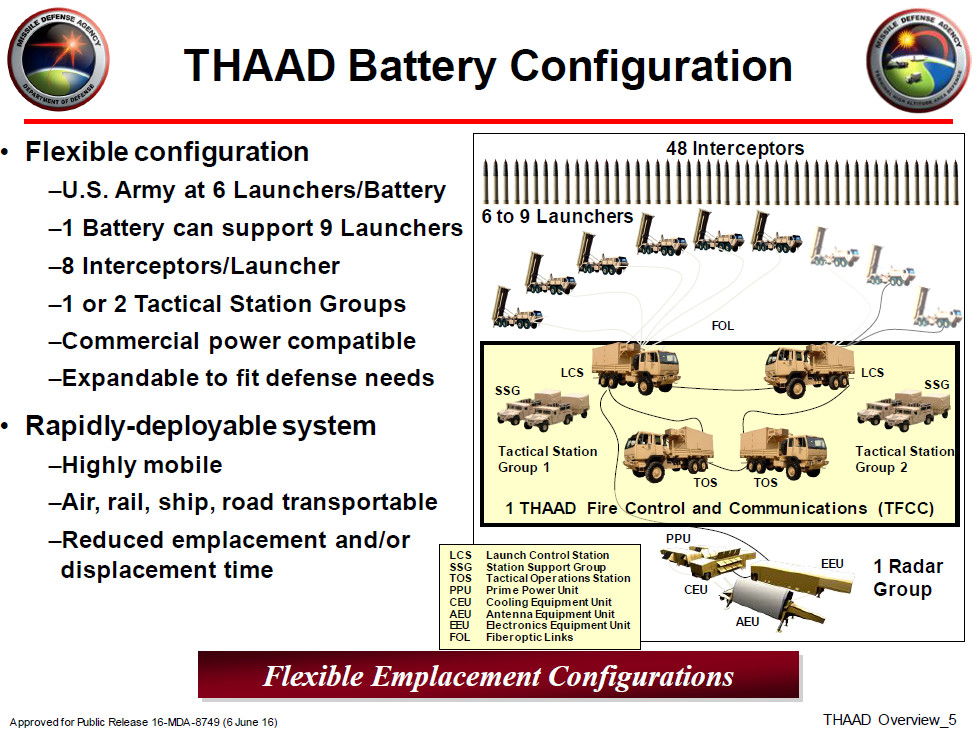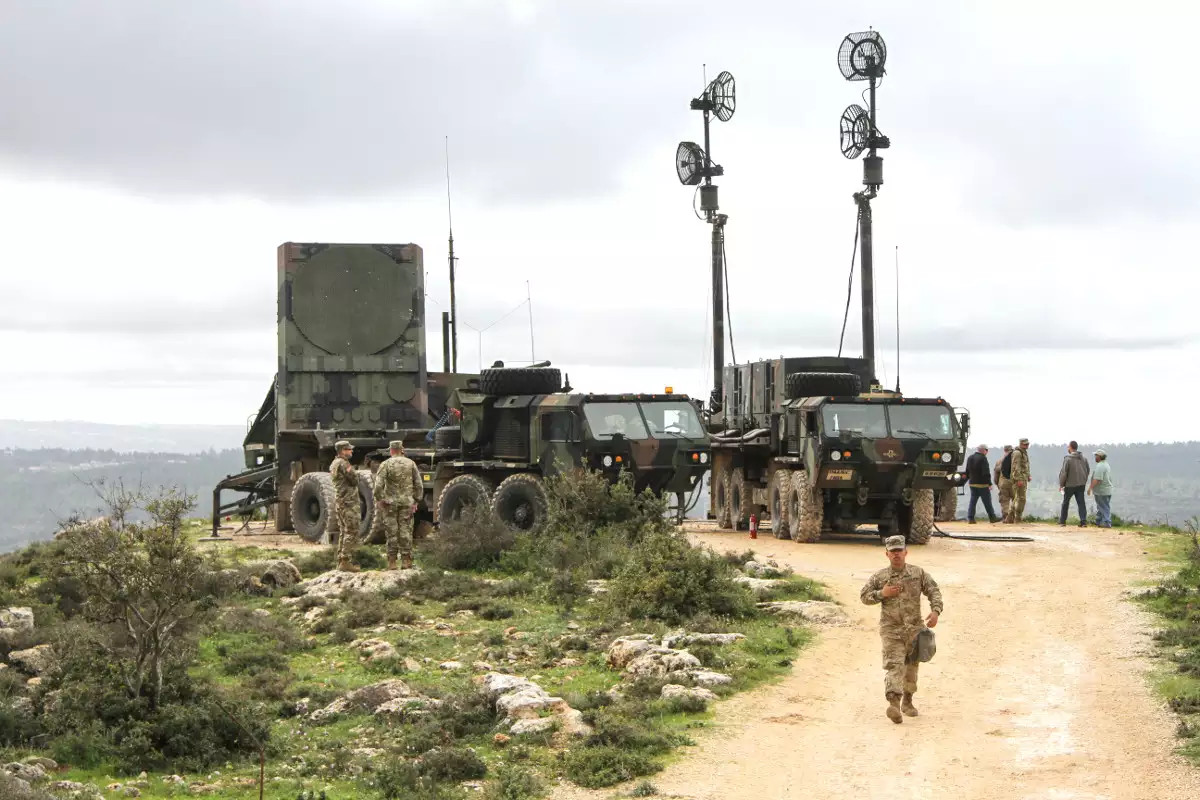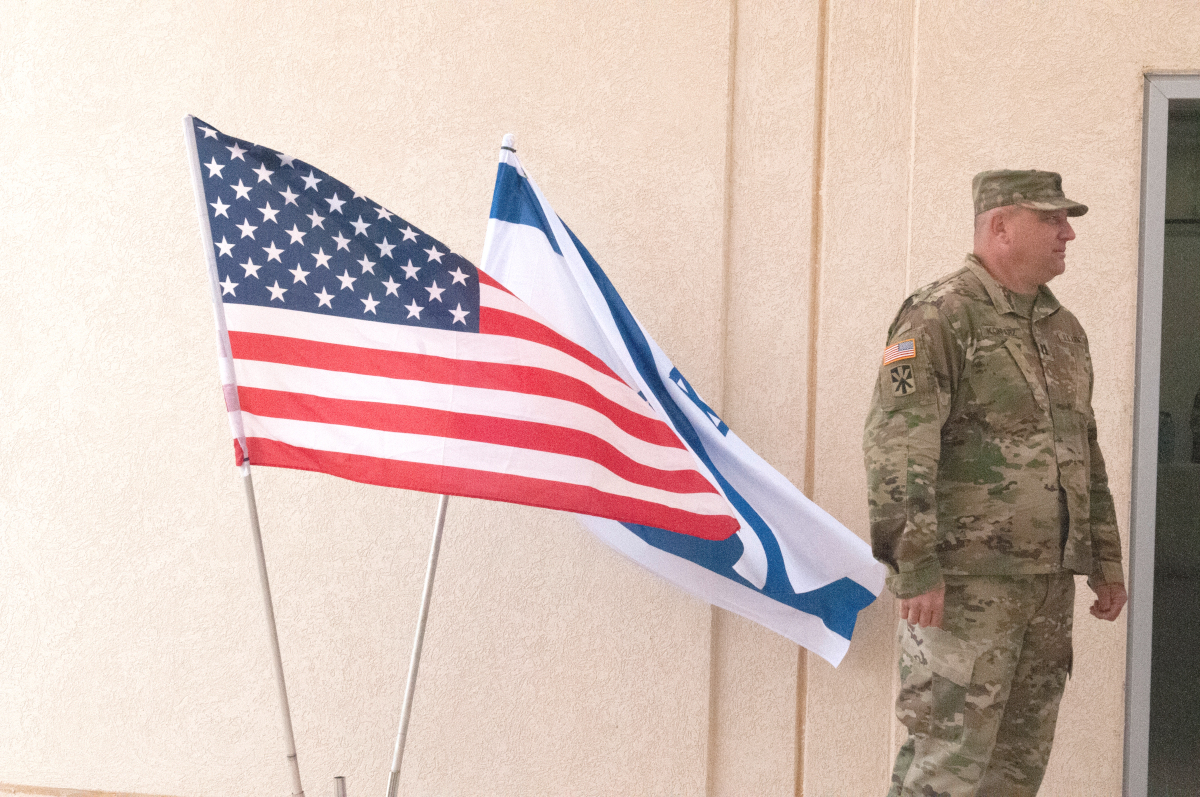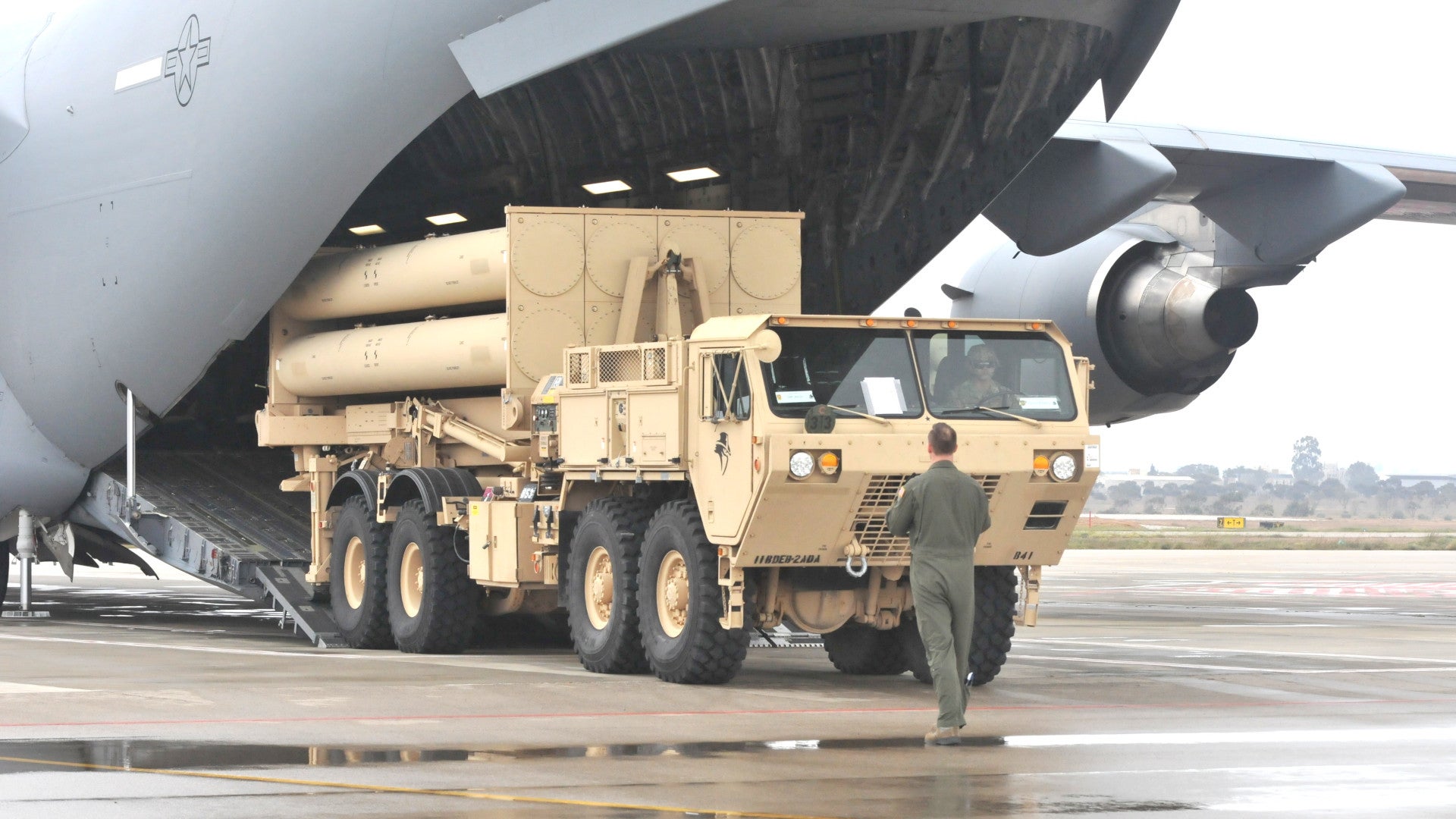The U.S. military has sent interceptors and other components of the Terminal High Altitude Air Defense ballistic missile defense system, or THAAD, to Israel for an exercise the first time. The deployment comes as both countries have been especially critical of Iran’s ballistic missile programs, but also reflects a contingency plan that has been in place for more than a decade.
U.S. European Command said that deployment had occurred “in early March,” according to an official press release on Mar. 4, 2019. The date stamp on pictures the U.S. Army subsequently released indicated that the first elements had arrived at Nevatim Air Base in central Israel on Mar. 1, 2019. The notice also added that the exercise is occurring at the direction of Acting Secretary of Defense Patrick Shanahan and is a demonstration of the Pentagon’s “Dynamic Force Employment concept.” Secretary of Defense James Mattis first announced this operational concept, which aims to make it harder for the U.S. military’s opponents to predict its operations and other activities in advance, in 2018.
“The purpose of the deployment is to practice rapid deployment across the globe of complex systems, and to enhance cooperation with the IAF’s [Israeli Air Force’s] Air Defense Systems,” a post on the Israeli Air Force’s official Twitter account said. “This is a defensive deployment that is not related to any specific current event.”
This is the first time the Army has deployed a full THAAD system to Israel. A THAAD battery can include up to nine transporter-erector-launchers, each carrying eight interceptors at the ready, as well as a long-range AN/TPY-2 X-band radar, a mobile fire control and command and control center, and various supporting equipment. Additional interceptors would be available to reload the launchers during a combat deployment, as well.

The task force included Battery B, 2nd Air Defense Artillery Regiment, assigned to the 11th Air Defense Artillery Brigade at Fort Bliss in Texas, as well as elements of the Ohio Army National Guard’s 174th Air Defense Artillery Brigade. The 11th oversees the bulk of the Army’s THAAD units, though two additional batteries are forward deployed semi-permanently to Guam and South Korea to defend against threats from North Korea.

This Dynamic Force Employment exercise offers an opportunity to evaluate the entire process of packaging the system up, quickly shuttling it to Israel, unloading it, setting it up, and linking it together with the Israel Defense Force’s (IDF) integrated air defense network. In an actual contingency, the plan would be to augment Israel’s own layered ballistic missile defense capabilities. The drill is also well in line with the U.S. military’s latest Missile Defense Review, which the Pentagon released in January 2019 and that heavily emphasized cooperation with regional allies, such as Israel.
“The United States will sustain its strong missile defense partnership with Israel, underpinned by a new U.S.-Israel Memorandum of Understanding (MOU),” the Missile Defense Review explained. “Taking advantage of various opportunities to conduct bilateral exercises …, the United States and Israel continue to improve their capability to cooperate operationally to address offensive missile threats in the region.”

Though Israel faces the threat of missiles, as well as unguided artillery rockets, from various regional actors, including the regime of Syrian dictator Bashar Al Assad, Iranian and Iranian-backed forces in Syria, and the Lebanese militant group Hezbollah, but one of the greatest concerns is Iran’s expanding ballistic missile arsenal. “One of Iran’s primary tools of coercion and force projection is its missile arsenal, which is characterized by increasing numbers, as well as increases in accuracy, range, and lethality,” the Missile Defense review warned.
So, while the U.S. military and the IDF insist that the THAAD deployment is unrelated to any specific event, it’s hard not to see it as a pointed signal to Iran. In January 2019, Iranian authorities tried and failed to launch a satellite into orbit in a test that the United States and Israel both criticized as a cover for ballistic missile development efforts. The next month, The New York Times reported, citing anonymous sources, that the U.S. government had rebooted a clandestine effort to sabotage Iranian missile programs.
Since pulling out of the multi-national deal over Iran’s controversial nuclear program in 2018, President Donald Trump and his administration have taken an increasingly hard line against Iran in general, putting a raft of economic sanctions back into place. One of the Trump administration’s main complaints about the Iran Deal was also that it did nothing to tackle concerns about non-nuclear issues, including Iranian ballistic missiles.
Iran has also demonstrated its own willingness and ability to employ its ballistic missiles in actual combat with multiple strikes against targets in Syria in recent years. These strikes send the Iranian government’s own signals to its regional opponents.

In addition, Iran has helped proliferate ballistic missile technology to its regional partners, including non-state actors such as Hezbollah and Houthi rebels in Yemen, further increasing the threats throughout the Middle East. In 2018, Israeli authorities, including Prime Minister Benjamin Netanyahu, accused Iran of supplying Hezbollah with GPS guidance packages for its missiles, though they did not provide any hard proof to support these claims. The Lebanese militant group quickly hid whatever evidence there might have been after Israel publicly identified buildings it said were missile factories.
Of course, it is also important to note that while this is the first time the Army has actually brought a full THAAD system to Israel, it has included real or simulated components of it in exercises in the past. The service conducts annual drills, nicknamed Juniper Cobra, to prepare to rapidly move air and missile defense systems into Israel every year, typically sometime in March. The U.S. military did not specifically say that this new THAAD deployment was part of this year’s Juniper Cobra.
These existing yearly exercises generally involves the deployment of Patriot surface-to-air missile systems to various sites in Israel. Since 2007, however, the training scenarios have, on and off, included the simulated employment of the U.S. military’s THAAD and the Arleigh Burke-class destroyer-based Aegis Ballistic Missile Defense (BMD) system. Juniper Cobra also includes Israel’s own Patriots and its Arrow family of ballistic missile defense systems.

At least since 2012, the United States has had an AN/TPY-2 forward deployed at a site on top of Mount Har Keren in southern Israel’s Negev Desert, also known as Site 512. Images and video of the new deployment show that Battery B brought their own additional AN/TPY-2 for the exercise.
In 2017, the Army opened Site 883 within the Israel Defense Forces Air Defense School at Bislach Air Base, also in the Negev. This was another sign of growing forward deployed U.S. military air and missile defense capability in Israel. Since then, the Army has also activated the 13th Missile Defense Battery to manage operations at that site.

But sending the complete THAAD package, rather than simply simulating its presence, it’s a much more pointed signal to countries, such as Iran. It’s also a clear demonstration that this is a step the United States and Israel could take during a crisis, rather than just a notional capability.
Given the Trump Administration’s efforts to not only continue, but expand missile defense cooperation with Israel, as well as its hard stance against Iran and its ballistic missile arsenal, it is possible that THAAD deployments to Israel may become more routine in the years ahead.
Contact the author: jtrevithickpr@gmail.com
